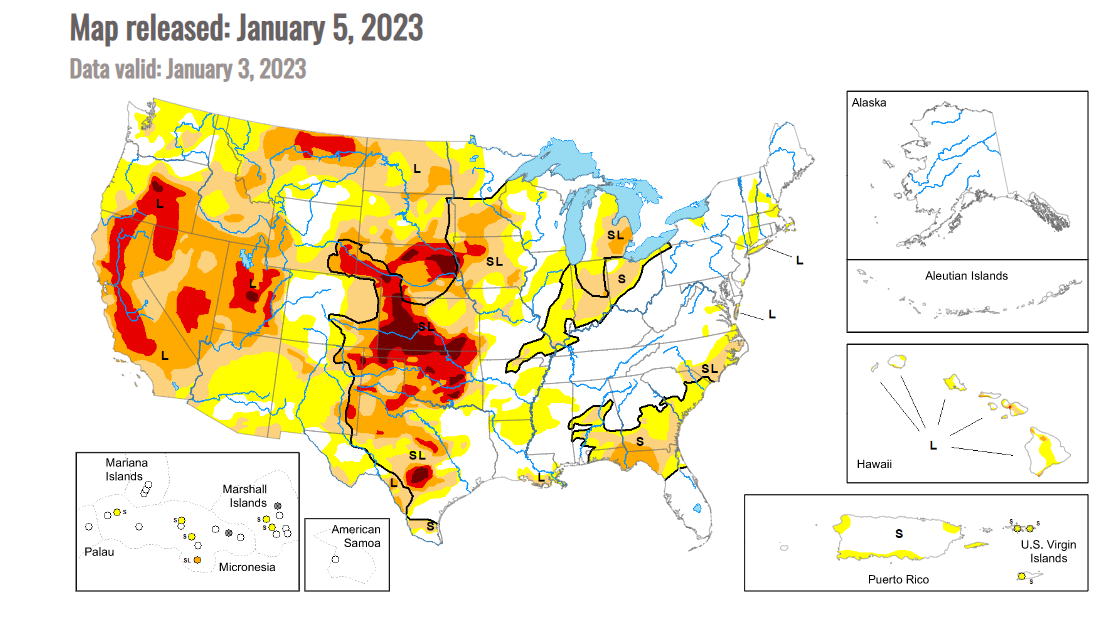Drought footprint recedes but remains wide

As of Jan. 3, 70% of the U.S. was covered by abnormal dryness/drought, down four percentage points from the previous week and 15 points below the peak in early November. USDA estimated 64% of U.S. winter wheat areas were covered by drought, down five points from the previous week and one point lower than last year at this time. The drought footprint over winter wheat areas has retreated 11 points from the November peak.
In HRW areas, dryness/drought covered 100% of Kansas, 60% of Colorado, 98% of Oklahoma, 71% of Texas, 100% of Nebraska, 98% of South Dakota and 91% of Montana.
In SRW areas, dryness/drought covered 50% of Missouri, 65% of Illinois, 93% of Indiana, 43% of Ohio, 52% of Michigan, 6% of Kentucky and less than 1% of Tennessee.
For the Plains, the Drought Monitor commentary noted: “Based on heavy precipitation (1 to 3 inches, liquid equivalent) this past week along with above-normal snowpack, a 1-category improvement was made to western Colorado. Beneficial precipitation also prompted improving drought conditions across north-central and northeastern Colorado. A decrease in the spatial coverage of extreme (D3) drought was made to central Nebraska. 12-month SPI and the long-term blend support the continued widespread severe (D2) to exceptional (D4) drought coverage for the central Plains. Norfolk, Nebraska, with a period of record dating back to 1888, had its driest year on record in 2022.”
In the Midwest, the Drought Monitor stated: “Widespread precipitation (1 to 3 inches) this past week led to a broad 1-category improvement across the middle Mississippi and Ohio River Valley. This recent heavier precipitation nearly eliminated 60-day precipitation deficits throughout Kentucky along with much of Illinois and Missouri. 90-day precipitation deficits are largest (more than 4 inches) across parts of Indiana and Ohio where broader moderate (D1) drought continues. Despite an increase in precipitation across Iowa during December, longer-term indicators continue to support D1+ drought. Since southern Minnesota received heavier precipitation after 7am ET January 3, this region will be evaluated for potential changes next week.”
Across the South, the Drought Monitor noted: “Widespread heavy rainfall (2 to 6 inches) resulted in a broad 1-category improvement to the lower Mississippi Valley and eastern Texas, which makes much of these areas drought-free. Degradations made to central and southern Texas were based on SPI at various time scales and 28-day streamflow. Following a dry week, much of Oklahoma and northwestern Texas remain designated with severe (D2) to exceptional (D4) drought.”







